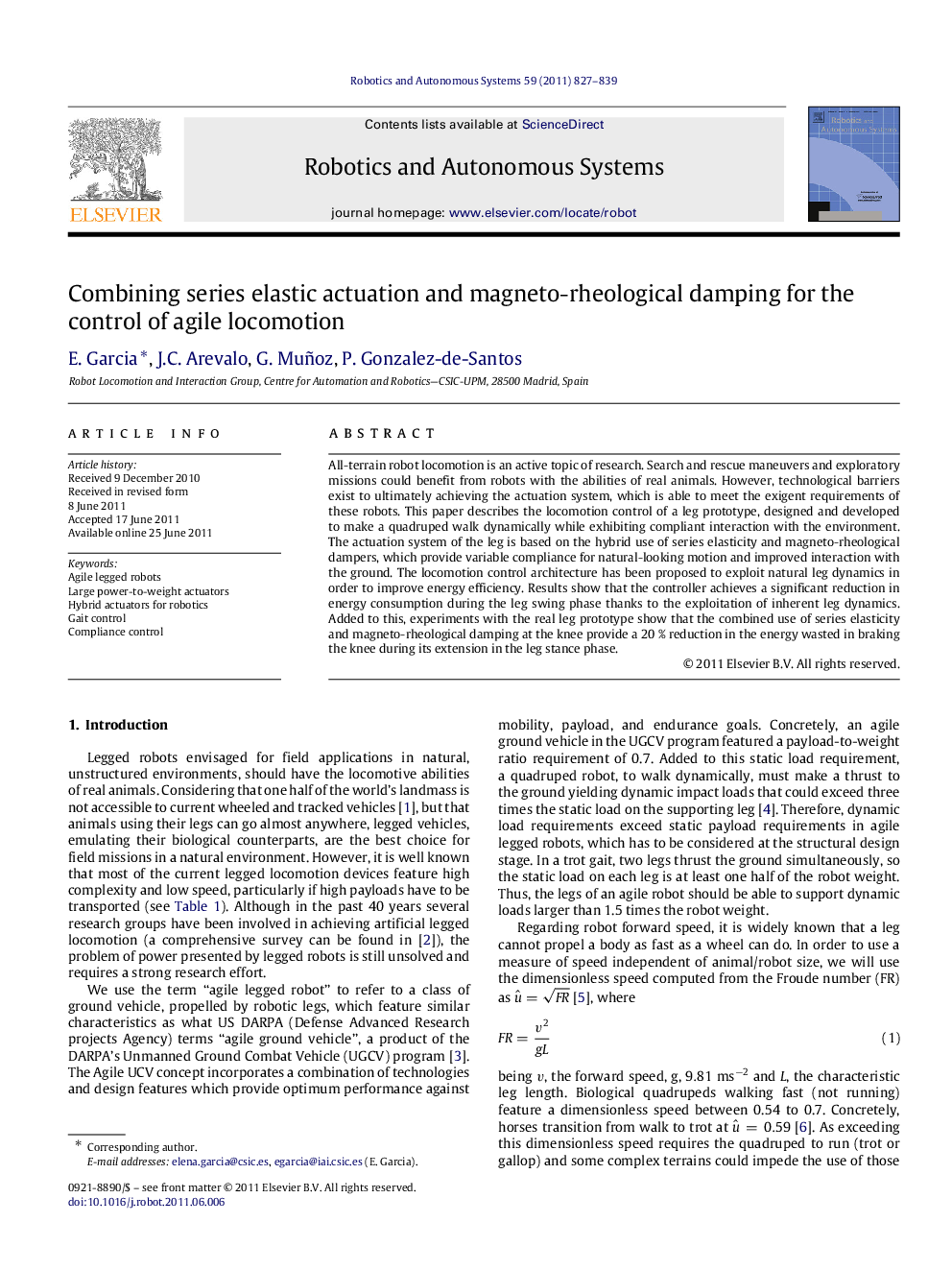| کد مقاله | کد نشریه | سال انتشار | مقاله انگلیسی | نسخه تمام متن |
|---|---|---|---|---|
| 413198 | 679903 | 2011 | 13 صفحه PDF | دانلود رایگان |

All-terrain robot locomotion is an active topic of research. Search and rescue maneuvers and exploratory missions could benefit from robots with the abilities of real animals. However, technological barriers exist to ultimately achieving the actuation system, which is able to meet the exigent requirements of these robots. This paper describes the locomotion control of a leg prototype, designed and developed to make a quadruped walk dynamically while exhibiting compliant interaction with the environment. The actuation system of the leg is based on the hybrid use of series elasticity and magneto-rheological dampers, which provide variable compliance for natural-looking motion and improved interaction with the ground. The locomotion control architecture has been proposed to exploit natural leg dynamics in order to improve energy efficiency. Results show that the controller achieves a significant reduction in energy consumption during the leg swing phase thanks to the exploitation of inherent leg dynamics. Added to this, experiments with the real leg prototype show that the combined use of series elasticity and magneto-rheological damping at the knee provide a 20 % reduction in the energy wasted in braking the knee during its extension in the leg stance phase.
► Hybrid actuation for agile legged locomotion.
► Controlling the hybrid use of series elasticity and magneto-rheological dampers.
► A control architecture uses inherent robot dynamics for robot motion.
► Energy efficiency in the locomotion cycle is achieved.
Journal: Robotics and Autonomous Systems - Volume 59, Issue 10, October 2011, Pages 827–839